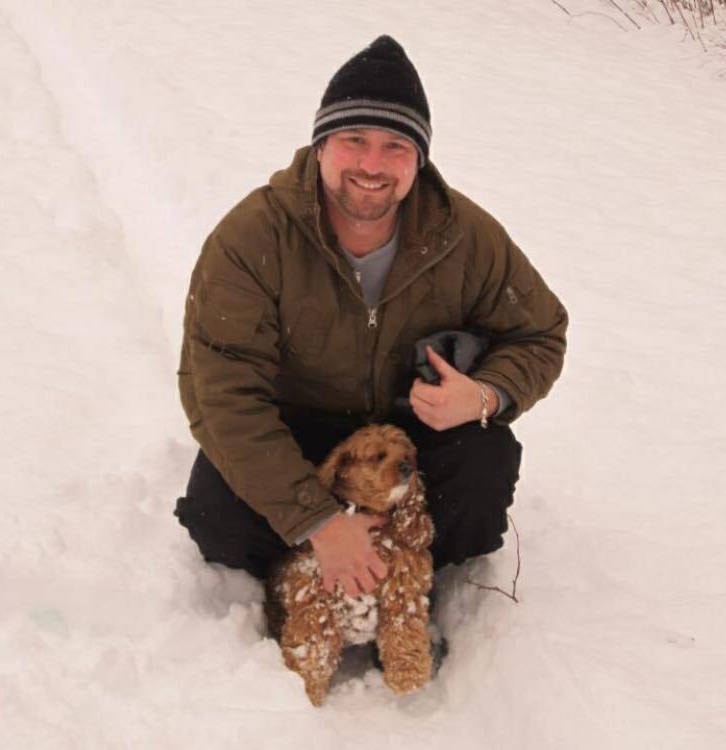New opioid prescription policies released last week reflect what Kelowna’s Brian Gervais has been saying.
Some of the responsibility for B.C.’s drug crisis rests on how doctors doled out medication in the last decade.
“I’ve been watching the (opioid crisis) happen from a first-hand perspective, and it’s been very frustrating,” said Gervais. “Doctors were handing (opioids) out like candy.”
Gervais has Crohn’s disease and five years ago a complication from his condition led to a painful intestinal surgery. Complications from that initial operation then led to three more surgeries, and what he describes as an incredibly painful recovery.
To manage the pain, he was prescribed Hydromorphone, which is also known as dihydromorphinone, and sold under the brand name Dilaudid, among others. It’s a centrally acting pain medication of the opioid class and a derivative of morphine.
“When you take it, you aren’t told you are taking something equivalent to heroin—they just don’t tell you about that,” he said.
Gervais said he was prescribed the medication because he was unable to work, and therefore on a fixed income. That meant he couldn’t afford any other style of treatment that would have helped reduce the symptoms of chronic pain.
“If you’re a person on disability making $900 a month, the only thing you could do to manage your pain was take the drugs provided by the government,” he said. “They didn’t pay for physiotherapy or massage and (the drugs) are quick acting.”
What Gervais didn’t realize when he first was prescribed those pain meds, however, is that he was going to become an addict in addition to being chronically ill and chronically in pain.
“I was taken on a ride and thinking, ‘this is what I was supposed to do,’” he said.
“But when you take opioids you are building a tolerance. It doesn’t matter how strong-willed you are, your body reacts as it does and tolerance keeps building and growing.”
It’s no secret that Canada is now in the midst of an opioid epidemic.
This country is the world’s second highest per-capita consumer of opioid pain relievers. In an article spelling out new prescribing policies, the Canadian Medical Association Journal said in Ontario admissions to publicly funded treatment programs for opioid-related problems doubled from 2004 to 2013, from 8,799 to 18,232.
“Among Ontarians receiving social assistance, one of every 550 patients who started on chronic opioid therapy died of opioid-related causes at a median of 2.6 years from the first opioid prescription, while one in 32 of those receiving 200 mg morphine equivalents daily or more died of opioid-related causes.”
In B.C. the links to prescriptions haven’t been made as clear, but the overdose crisis prompted the health minister to call a state of emergency in 2016 and overdose deaths have yet to slow down in 2017.
With no choice but to recognize the problem, the 2017 Canadian Guideline for Opioid Therapy and Chronic Noncancer Pain was released May 8, calling on doctors who treat people with chronic pain to restrict the prescribing of opioid drugs like Percocet, OxyContin, Dilaudid and morphine.
Their first line of action is now to be prescribing non-drug treatments and non-opioid drugs before turning to a prescription for opioids. They say that opioids should only be prescribed after other treatments are tried and only after other treatments are given a fair trial.
Doctors are also dissuaded from prescribing opioids to patients with a prior history of alcohol or drug abuse or active mental health disorder.
The recommendations also address the escalating needs of opioid users, establishing a maximum dose of 50 to 90 mg a day.
Gervais said some of these methods may have helped when he was initially dealing with pain, but he’s concerned about what happens to those who have already developed an addiction being put on a prescription cap.
Increasing tolerance requires an ever-increasing dose of drugs and once tolerance has been built, that’s when things get complicated.
“When government initially decided they wanted to get everyone off of it, people started struggling to find doctors to help,” he said, of a mandate that predated the new round of recommendations.
“I was told I’d just have to deal with it and find other ways to deal with the pain. I wasn’t given an answer on what that would be.”
The sudden change in tack caused many to go to the streets to meet their needs.
Gervais wasn’t much better off. The doctor who had long treated him cut him off, but he said he was lucky to find another who picked up the prescription to ensure that Gervais would have safe access to medication.
Then he took another course of action.
To address what’s become a well-established addiction, Gervais decided to do a quick detox and then get prescribed Suboxone, a drug that blocks the effects of opioids.
“This new program in Victoria called the rapid detox opiate withdrawal is a brutal program but it gets you off quick and gets you going back to your life,” said Gervais.
“I want to just strongly, strongly say that if you are going to have surgery or if you have pain in any way and you have an option to start on opiates or not—don’t. Trust me when I say the physical pain you will be masking is nothing in comparison to the life and years you will lose from starting on that medication.”
Being on Suboxone, he said, isn’t exactly freedom, but it’s a step in the right direction and a step he hopes more opioid addicts take, while more of the community learn about what’s created the issues at hand.
“It makes me so angry,” he said. “I see a lot of people being blamed for being addicts who really didn’t understand what they were getting into to begin with.”
